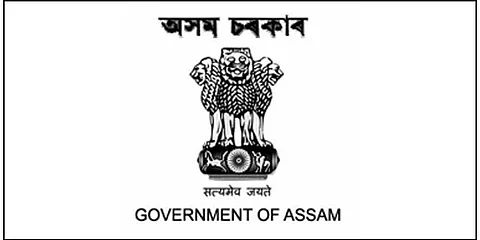
- Home
- Live Blog
- Breaking News
- Top Headlines
- Cities
- NE News
- Sentinel Media
- Sports
- Education
- Jobs

Hitesh Kalita
(hitesh.kalita@gmail.com)
The Home and Urban Affairs Department of the Government of Assam, under the dynamic leadership of Chief Minister Himanta Biswa Sarma, has recently drafted the Transferable Development Rights (TDR) Scheme. The scheme aims to provide public facilities by ensuring fair compensation to landowners for land reserved for social facilities, with a vision to support proper and planned city development and expansion. It will be applicable in all districts except the autonomous districts. However, if any autonomous district expresses its willingness to adopt the scheme, a notification will be issued to extend it to those areas.
TDR schemes have been introduced in the most populous cities around the world, with the Government of Maharashtra being the first to implement this scheme in India. Currently, the scheme is successfully implemented in several Indian cities, including Mumbai, Bangalore, Chennai, and Pune, with Delhi also taking steps towards its implementation. The TDR Scheme of the Government of Assam defines TDR as giving the right to build as per the built-up area, which is received as compensation in the form of Floor Area Ratio (FAR). Thus, FAR is the area that is under construction and granted to the landowner under this scheme. The FAR credit will be issued in a certificate called a Development Right Certificate. This certificate shall be approved in writing by the appropriate authority by specifying the FAR credit in letters and numbers along with the number of square metres of area under construction that the owner or lessee receives upon approval.
Let me explain Transferable Development Rights (TDR) with a simple example. Imagine there is a building on a piece of land next to a wide road. If the government wants to widen the road and needs some of the land in front of the building instead of providing monetary compensation, it will provide TDR. Suppose the land area where the building is located is 1,000 square meters. If the Floor Space Index (FSI) or Floor Area Ratio (FAR) for the area is 150%, then the construction area allowed on that land is 1,500 square metres (1000 sq. m. x 1.5 = 1500 sq. m.). If the government acquires 100 square metres of land in front of the building for road widening, the construction area for the 100 square metres will be 150 square metres (100 sq. m. x 1.5 = 150 sq. m.). This means that the landowner will receive a TDR of 150 square metres for the acquired land. With the TDR certificate, the owner can either build an additional 150 square meters in the existing building or another part of the premises or he can sell the 150 square metres of TDR to someone else. This TDR is transferable and can be used in low-density and less developed areas that are sold or originate from a high-density, developed area.
For instance, if a landowner in Fancy Bazaar receives a TDR of 300 square metres for land acquisition, he can either build in Lokhra or the surrounding area of Guwahati or sell it to a developer. If someone wants to build a house on a 1000-square-metre plot in Lokhra and the FAR is 100% (as FAR is usually lower in low-density areas) then the allowed construction area is 1000 square meters. However, if the developer buys the TDR from the landowner of Fancy Bazaar, they can construct on an area of 1300 square meters (an additional 300 square meters). However, TDR created in Lokhra cannot be used for additional construction in Fancy Bazaar as the TDR received from low-density and less developed areas does not permit construction in dense, highly developed areas. Through the TDR scheme, the following tasks can be easily accomplished:
Easy land acquisition: TDR facilitates land acquisition for road widening, playgrounds, parks, schools, and other infrastructure projects without the government having to pay direct compensation for the land.
Conservation: TDR helps conserve heritage sites, agricultural lands, and forest areas.
Fair compensation: Landowners receive appropriate compensation through TDR. They can potentially earn more through TDR than the direct compensation the government would pay for the land.
Reduced disputes: TDR helps avoid various disputes and land problems commonly encountered during land acquisition.
Market flexibility: TDRs can be sold in the market, allowing developers to sell their TDRs to other developers.
Suburban development: TDR can be used to develop suburban areas, reducing the problem of very densely populated regions. TDR can be transferred from densely populated areas to low-density areas, but TDR generated in sparsely populated areas cannot be transferred to high-density areas.
Slum redevelopment and public facilities: TDR supports the redevelopment of slum areas and the development of public facilities without significant government expenditure. Developers can obtain TDR by constructing houses and public facilities for the government.
The Government of Assam has detailed a comprehensive list of land to which TDR may apply in its draft scheme. These include unused FARs for constructing various public facilities, building new roads, road widening, solid waste processing sites, septage management sites, water supply schemes, areas declared as heritage sites, and affordable housing construction. The draft scheme also applies to areas identified as reserved or restricted in the master plan under the Assam Town and Country Planning Act, 1959, or the GMDA Act, 1985, as well as reservoir areas. We believe that this innovative initiative led by Chief Minister of Assam Himanta Biswa Sarma will make urban life more integrated and orderly by marking a significant step in the SMART development of Guwahati.